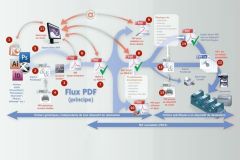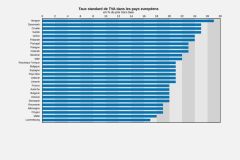Calculating delivery costs is a constant challenge for e-tailers. Although carriers often offer similar services, they each use distinct economic models: difficult delivery zones, island delivery, weight, parcel size, increments, fuel surcharges, mechanization, delivery against signature options, SMS, absence charges, and so on. A veritable Lepine competition of additional charges that can be higher than the basic rate.
This diversity leads to increasing complexity: combining product characteristics, parcel dimensions, destination zones, delivery methods and multiple options (signature, express, relay, insurance...) becomes difficult to model with conventional tools. In a highly competitive market, the accuracy of shipping calculations has a direct impact on operating margins, price competitiveness and the perceived quality of the customer experience.
When miscalculating shipping costs becomes a major economic risk
Incorrectly calculating shipping costs has two major consequences, both of which are damaging in different ways.
When a price displayed to the customer is too high, the risk is immediate: the sale won't go through. Price elasticity on the Internet is extremely low, and the slightest perceived difference is enough to steer the consumer towards a competitor. Abandoned shopping baskets due to excessive delivery charges represent a direct loss of sales, and have a lasting negative impact on the site's overall conversion rate 48% and 55 reasons for abandonment.
The other, quieter but often more serious danger arises when a posted rate is lower than the actual cost invoiced by the carrier. The difference becomes a gift to the customer, but a net loss of margin, invisible at the time of the order, but cumulative over dozens or hundreds of shipments. In sectors where margins are already tight, such as printing, these discrepancies can accumulate to the point of degrading overall profitability without the company being immediately aware of it. Poor calibration of shipping costs can then create a structural deficit that only becomes apparent when volumes increase, with consequences that can become critical for the financial equilibrium of the business.
The PrintFlux shipping pricing engine
PrintFlux has upgraded its pricing engine to automatically identify the best option from among all available offers, according to customer profile, basket content and carrier-specific constraints. The aim is to ensure a perfect match between the actual situation of the order and the applicable pricing grid(s), without any manual post-order intervention.
The first step is to eliminate all impossible or inappropriate combinations. These cases represent a recurring source of errors and costs that are not billed to the basket, and only identified when the carrier sends the invoice. PrintFlux neutralizes these risks upstream. For example, the engine prevents a customer in Corsica or the French Overseas Departments and Territories from choosing an offer reserved for mainland France, or a customer located in a particular area such as the island of Groix from activating a shipping method that would actually incur additional "difficult delivery" costs that cannot be re-invoiced. Similarly, a Belgian customer cannot mistakenly choose a cheaper delivery country.
Once we've eliminated the risk of grid errors, PrintFlux also deals with a more insidious but potentially more costly problem: the additional charges invoiced by the carrier at the end of the delivery process. These surcharges, impossible to pass on to the customer, can account for 10-20% of the logistics budget, and represent a net loss of margin if left untreated. To anticipate them, the engine uses a model integrating criteria taken from the basket (dimensions, weight, presence of hazardous materials, etc.) and parameters specific to the order (region or country of delivery, private or professional status, VAT rules, etc.). If a carrier applies a surcharge, such as a delivery to a private individual, or absence charges, PrintFlux can detect this risk and avoid selecting this option.
Finally, the engine manages all origin and destination scenarios, whether for shipments within France (mainland France, overseas territories, specific zones), to European Union countries or to destinations outside the EU. Customs, fiscal and logistical constraints specific to each zone are integrated into the calculation, guaranteeing total consistency between customer promise, actual cost and regulatory obligations.
Thanks to this evolution, PrintFlux becomes a calculation engine capable of drastically limiting errors, anticipating hidden costs and securing margins, by adapting to the most complex logistics scenarios. An added value to propose to these key accounts during end-of-year budget meetings.






















